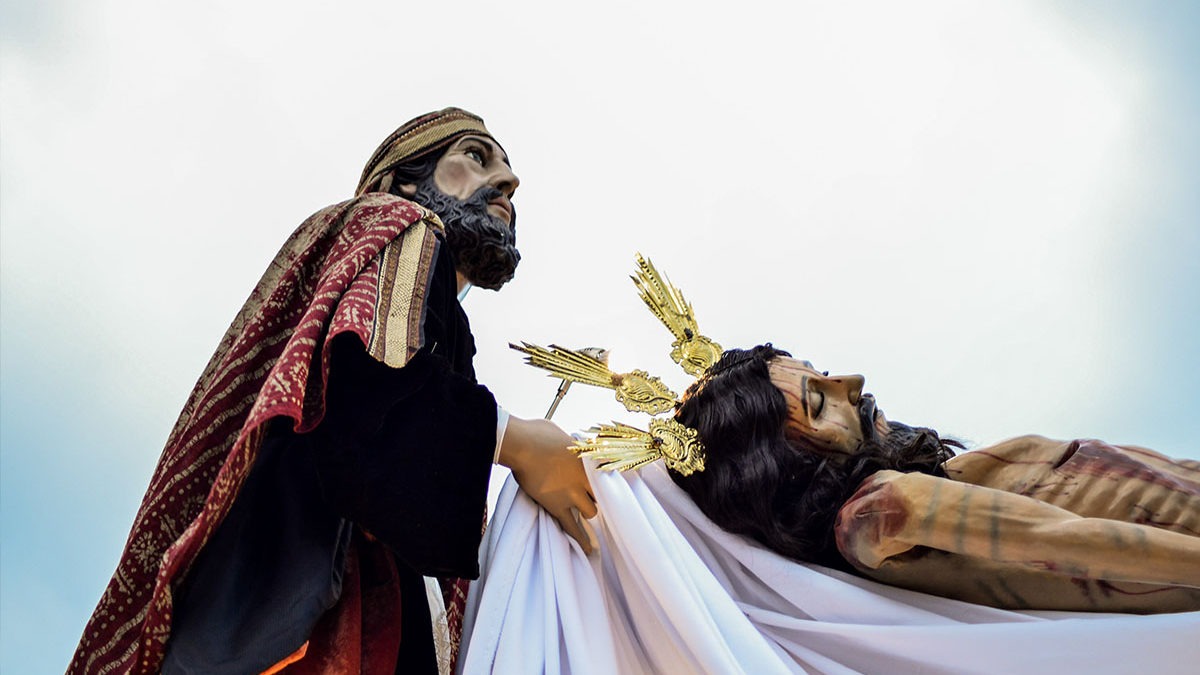Holy Week In Antigua Guatemala
Holy Week commemorates the Passion, Crucifixion and Resurrection of Jesus Christ across the world. Here in Antigua Guatemala, almost the entire city participates, and tens of thousands of visitors, both national and international, flock here to witness the celebrations.
Apparently, only Seville in Spain attracts more visitors than Antigua Guatemala during Lent (La Cuaresma) and Holy Week (Semana Santa). If you’re lucky enough to be visiting during the first week of April, you will experience the full glory of Holy Week. 2023 is the first year since the pandemic that the faithful can celebrate this religious and cultural event in mass once again.
Holy Week in Guatemala dates back to the time of the Spanish Conquest in the 16th century when the first brotherhoods were established and exists as a fusion between Catholicism and Maya culture. So, what is so special about the Lent and Holy Week celebrations in Antigua Guatemala?
The Vigils
Each day during Holy Week there will be a vigil (even in the villages near Antigua). The vigils are open to the public from early in the morning and usually are closed by midnight. In addition to visiting these vigils and marvelling at the carpets and orchards in honour of the image displayed, the vigils are also a good opportunity to learn more about Guatemalan cuisine. The outskirts of the temples are flooded with traditional food like chéveres, tacos, dobladas, tostadas, panes con pollo and tortillas with meat that are the delight of children and adults.
The Alfombras
Check out the elaborate and beautifully artistic alfombras (carpets) made of aserrín (sawdust) or viruta (wood shavings) dyed in bright colours. Pine needles, flowers such as bougainvillaea, chrysanthemums, carnations, and roses, and even fruits and vegetables are also used to adorn the route of the processions. Sand or sawdust is generally used to level the cobblestone street, then these decorative elements are painstakingly arranged on top. The alfombras are made by residents along the route of the procession who invite friends, neighbours, and extended family to assist them.
Interestingly, these alfombras are a nod to the Mayan tradition of laying out elaborate carpets of feathers and flowers for kings to walk on. The Spanish, when colonizing and evangelizing, took this Maya ritual and fused with Catholic dogma. Like the Mayan gods and deities, the cofrades (religious brotherhoods) could not touch the ground, because of their contact with religious images. And so, they would walk on an alfombra.
The Processions
The actual processions are another example of this fusion of Catholic and native images and symbols into one celebration. The Maya were used to transporting important people via palanquin—a covered litter for one VIP passenger, consisting of a large box carried on two horizontal poles by four to six bearers—so they found the idea of processions familiar.
During Holy Week, at least 25 processions will leave from different churches, shrines and brotherhoods in Antigua and its surroundings. On Good Friday (Viernes Santo), no fewer than four processions will pass through the streets of Antigua!
The processions that you will see during Lent and Holy Week are considered spectacular art shows. Everyone involved starts working on the design, creation, lighting, and elaboration of the decorations many months before. Some people work throughout the year and for many it is THE highlight of the year!
The wooden platform (anda) is used to transport a particular image. The decorations that the processions carry on their andas are inspired, as well as the holy vigils, by passages from the Bible and depict key messages derived from Psalms or Proverbs.
Each procession has spaces in which the carriers (cucuruchos) can place their shoulder to carry the floats; these spaces are called “arms”. During Holy Week, the procession carried by the conquerors of the church La Escuela de Cristo has 90 arms whilst the Santuario de San Felipe de Jesús has an amazing 100, making these the largest processions for men in Antigua. Each carrier has the honour of participating for one block in the streets of Antigua. Therefore, up to a staggering 6000 people are carriers for just one procession!
The processions vary in the length of time that they take to complete their journey. For example, the procession of Santo Entierro del Santuario de San Felipe de Jesús leaves the temple at 3 PM on Good Friday and returns at 6 AM on Holy Saturday, making its journey the longest of all processions taking 15 hours to complete!
You could almost say that Holy Week in Antigua Guatemala is like a scene from a Cecil B. DeMille Hollywood epic. But what I appreciate is that it’s real and from the heart. Globalisation and commercialisation haven’t ruined it!

Written by Sofia Letona
Photos by Sofia Letona



